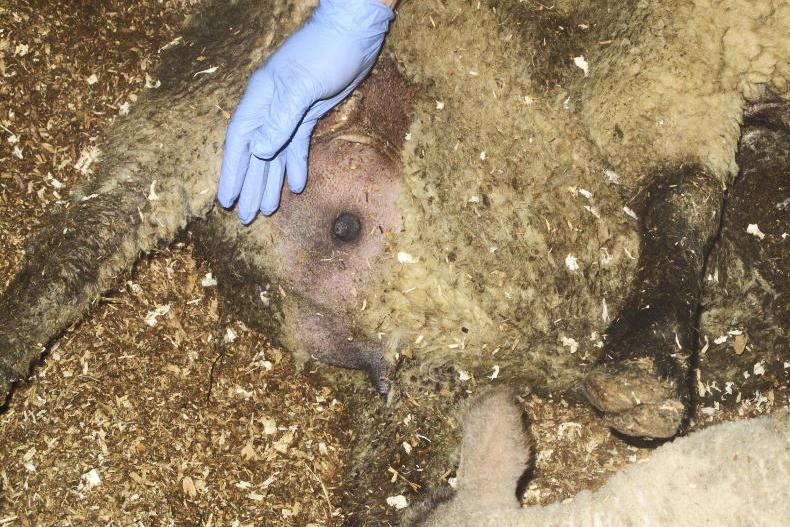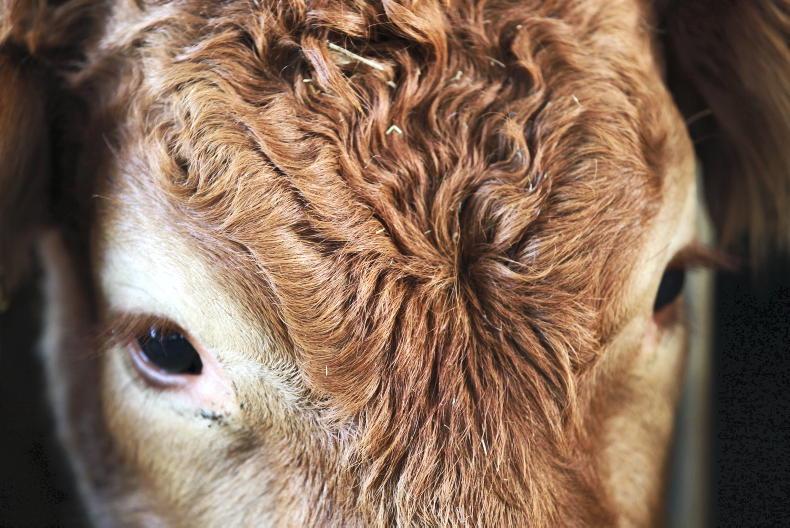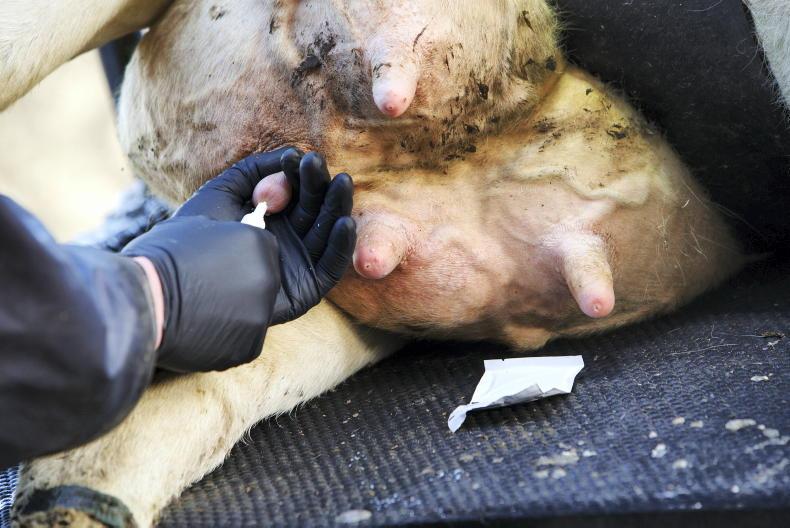The recent inclement weather, along with challenging ground conditions, low grass dry matter and poor utilisation, has put ewes lambed a few weeks and approaching peak milk yield under greater nutritional stress.
Hygiene, in some cases, has been lower than optimum, which is not surprising, given ewes have been retained indoors for longer and those outdoors have been dealing with continual wet underfoot conditions.
There has been an increase in the number of cases of mastitis reported.
Suboptimum intake and a resultant lower milk yield is regularly linked to cases where lambs are suckling vigorously and a ewe’s teats become sore, leading to a reluctance to stand for lambs to suckle.
Type of mastitis
Treatment options and the chances of recovery depend on the type of mastitis present.
The characteristic symptoms of peracute or gangrenous mastitis is severe depression, ewes ceasing eating, dehydration and a swollen mammary gland that turns from warm at the start of the infection to a blue discoloration.
In the worst-case scenario, the mammary gland can become rotten and fall away.
Acute mastitis can be identified by a warm, swollen, red gland that can possess normal- or abnormal-looking milk.
The gland is typically painful to touch and leads to ewes often walking lame in trying to avoid touching the gland with their leg.
The other forms are chronic mastitis, which often go unnoticed, and subclinical mastitis, which is also hard to identify.
The first sign is often lambs thriving poorly or sucking continuously. This form can progress to clinical forms described above.
Treatment options
Treatment of all forms generally includes administering a course of antibiotics, with veterinary advice to segregate affected animals from the flock.
If multiple cases arise, it is advised to collect a sample for laboratory analysis and to allow a targeted treatment programme.
Non-steroidal anti-inflammatory drugs with pain-relieving action are also prescribed by some vets.










SHARING OPTIONS